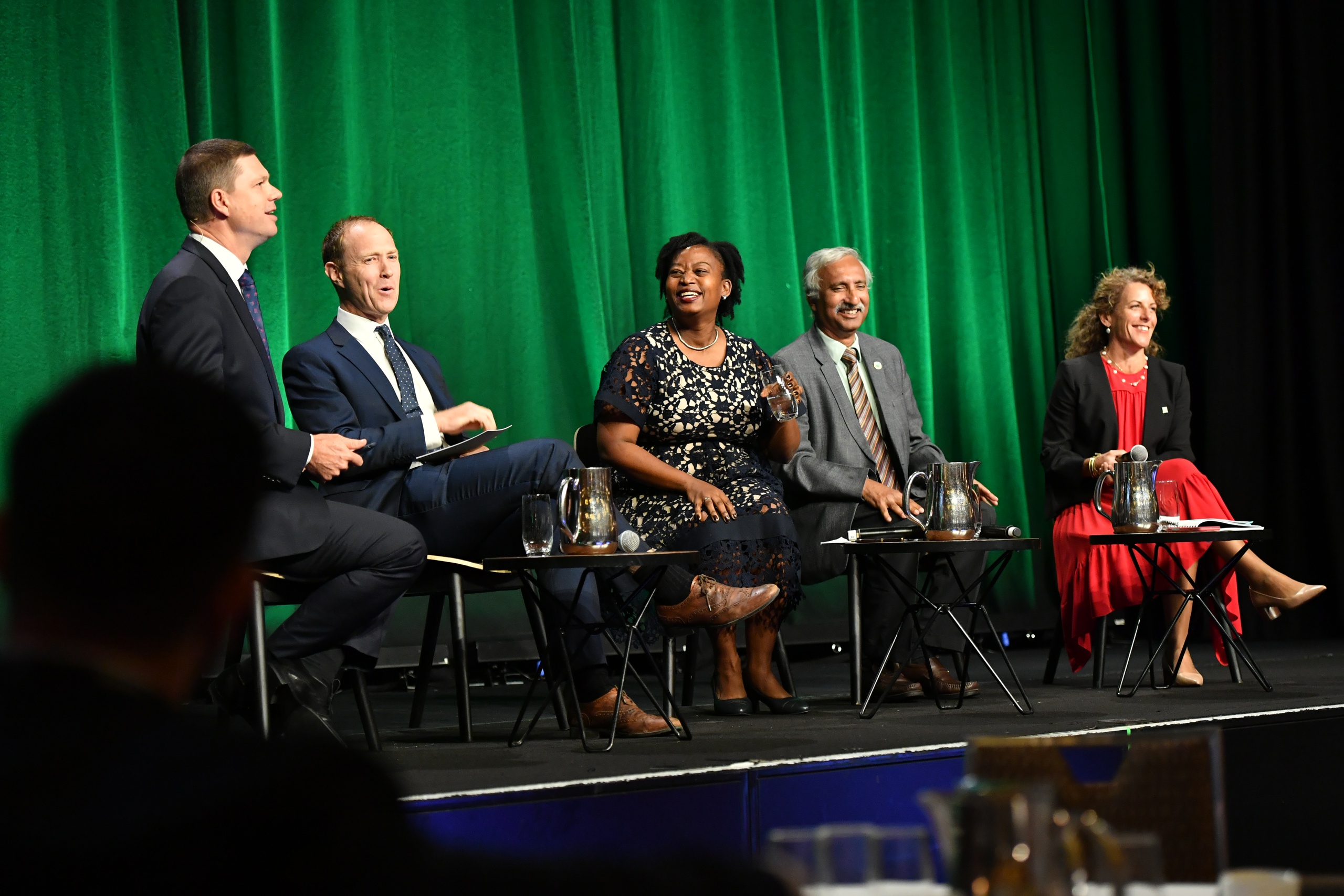Energising Communities at Green Cities
28 Mar 2018
“If we do things right, we will be the natural home of low-cost energy,” Professor Ross Garnaut told the crowd at the recent Green Cities conference in Melbourne.
Garnaut, a name synonymous with climate change policy, set the tone for two days in which the industry’s sights were firmly fixed on the horizon – and on a future where technology, policy and people power can combine to energise communities.

Lendlease’s Kylie Rampa, Frasers Property Australia’s Rod Fehring and Multiplex’s John Flecker turned on the ignition with a discussion about the trends and technologies driving the property industry and reshaping sustainability. Surging energy prices, skyrocketing housing costs, the backlash against a Big Australia, autonomous vehicles and artificial intelligence were all on the agenda.
“No one can entirely plan for this future – because no one can keep up. But human beings are inherently adaptable, and we will find solutions,” John Flecker said optimistically.
Optimism was the order of the day, as we challenged the audience to look at sustainability through a different lens. Smart cities are more than just repositories of high tech wizardry. Mental health is about “more than yoga and fruit bowls” said National Mental Health Commissioner Lucy Brogden. And build to rent isn’t just a financing mechanism for affordable housing, but a way of accelerating the uptake of sustainable apartments.
We unpacked the common issues challenging green building councils around the world. We looked at how big picture issues – from modern slavery to climate change – are changing the way company directors think about business. And we learnt from Tim Gartrell, the genius behind some of Australia’s most successful campaigns, how to harness the power of people to build a sustainable future.
As technology accelerates, we need to bring more nature into our cities. Speaker after speaker, including The Nature Conservancy’s Pascal Mittermaier, workplace researcher Jacqui Schirmer and award-winning designer Jamie Durie argued that nature holds the key to our aesthetic, intellectual, cognitive and even spiritual satisfaction.
Nature is a “catalyst” for a better way of living, Pascal said. The more we incorporate nature into our living, the more likely we are to see kids playing outside, parents interacting, people growing food and caring for community gardens, more people walking and cycling. And more communities energised to tackle climate change.
Nature is at the heart of an “operating rhythm” which steers Indigenous communities too. Sharing her insights during the long-awaited Reconciliation Breakfast, Andrea Mason, Indigenous leader and CEO of the NPY Women’s Council, talked about “a business and governance operating rhythm” that is guided by land, language and family.
Politicians of all persuasions were in force during Green Cities. While Shadow Minister for Climate Change and Energy Mark Butler lamented the “policy paralysis” in Canberra, he applauded a private sector that is getting on with the job of addressing emissions.
Josh Frydenberg MP, Minister for the Environment and Energy championed Australia’s progress. Take just one example: reducing the threshold of the Commercial Building Disclosure scheme has cut 3.5 million tonnes of carbon and saved $50m, he said.
“Cities are places of hope,” said Shadow Minister for Infrastructure, Anthony Albanese. How we respond to the challenges we face will “make all the difference” to our future. “Energising communities is so important” and can only be achieved “by working together”.
Property Council chief executive Ken Morrison said it was clear “there is no shortage of innovation in this industry” but we still don’t have a policy roadmap that points the direction towards zero carbon.
The GBCA is, however, charting a course for the industry, and our Head of Market Transformation, Jorge Chapa, launched the GBCA’s vision for the next iteration of Green Star and more detail of the upcoming Carbon Positive Roadmap.
The GBCA is planning to redefine world leadership and best practice, Jorge said, expand Green Star’s scope to encompass more social sustainability issues and incorporate new requirements that encourage ongoing operational performance. Most importantly, the GBCA plans to ramp up Green Star requirements in line with the 1.5°C trajectory set out in the Paris Agreement.
Summing up the two days, the message from Green Cities was crystal clear. A carbon zero future is coming. But it doesn’t need to be scary. Instead, the opportunities are limitless, provided we energise our communities.